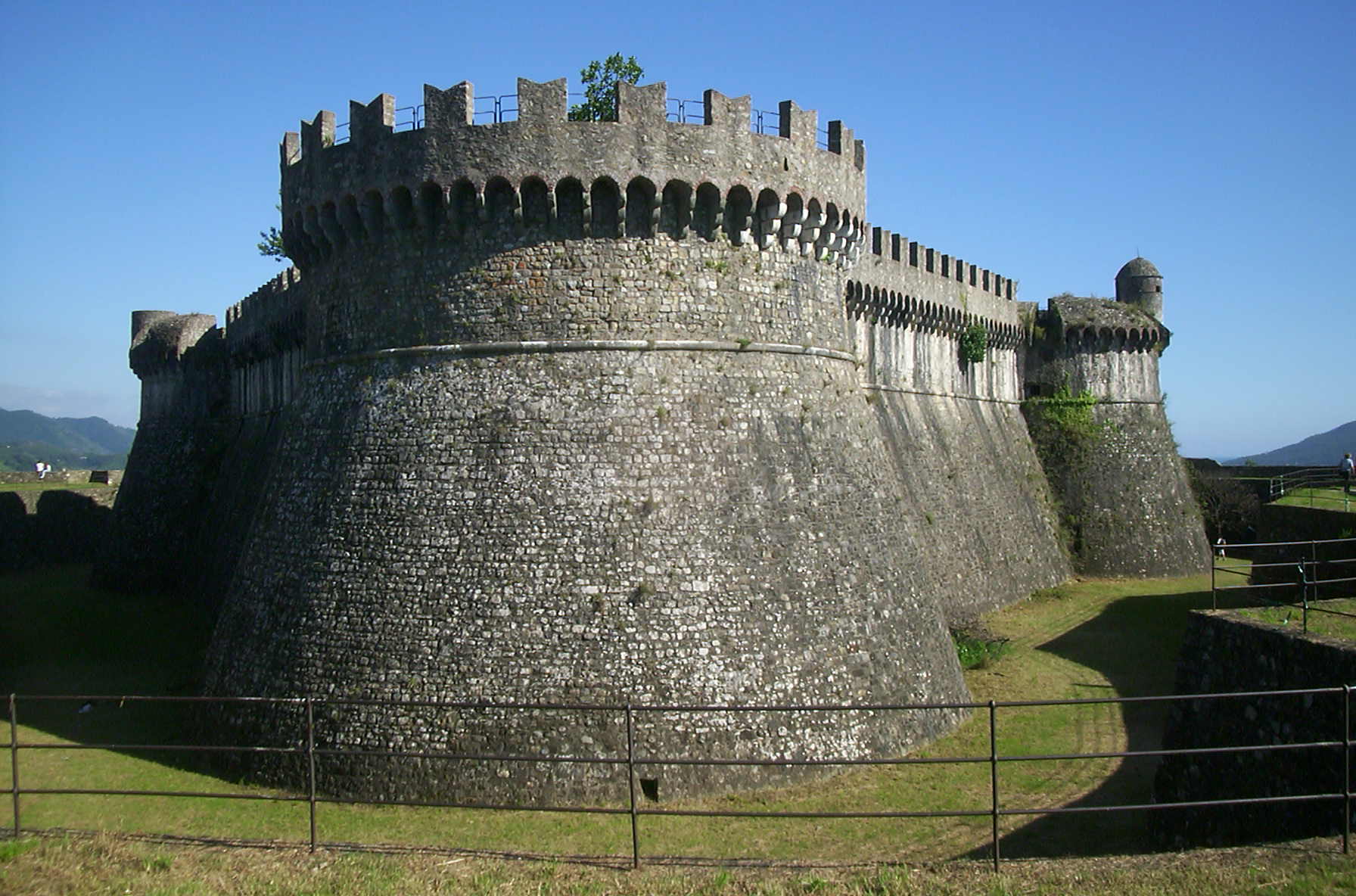|
Fortress Of Sarzanello
The fortress of Sarzanello is a military fortification on the Sarzanello hill, near Sarzana, in province of La Spezia, Italy, above the Val di Magra. Since December 2014 it is managed by the Ministry of Culture (Italy), Ministry of Culture. Description The fortress has "three squat circular towers" that do not come up higher than the walls, a "central square tower, and a triangular protobastion". Two distinct building elements are visible: *the castle proper, the main part of the fortification, has a triangular plan with three bastions at the top; *a huge ravelin in the form of a triangular fortified embankment opposite the castle, to which it is connected by a bridge. Access to the fortress is by crossing the stone bridge, which crosses the wide and deep fortified moat. History As early as the 4th century Luni, Italy, Luni had begun declining, and its inhabitants began migrating to the surrounding hills for safety. This expanded existing villages and started new villages (Nicol ... [...More Info...] [...Related Items...] OR: [Wikipedia] [Google] [Baidu] |
Sarzana
Sarzana (, ; ) is a town, ''comune'' (municipality) and former short-lived Catholic bishopric in the Province of La Spezia, Liguria, Italy. It is east of La Spezia, on the railway to Pisa, at the point where the railway to Parma diverges to the north. In 2010, it had a population of 21,978. History The position of Sarzana, at the entrance to the valley of the Magra (ancient ''Macra''), the boundary between Etruria and Liguria in Roman times, gave it military importance in the Middle Ages. The first mention of the city is found in 983 in a diploma of Otto I; in 1202 the episcopal see was transferred from the ancient Luni, southeast, to Sarzana. Sarzana, owing to its position, changed masters more than once, belonging first to Pisa, then to Florence, then to the Banco di S. Giorgio of Genoa and from 1572 to dogal Genoa itself. A fortress to protect the town stood since at least the tenth century; it was built in its current shape under orders from Lorenzo de' Medici. In ... [...More Info...] [...Related Items...] OR: [Wikipedia] [Google] [Baidu] |
